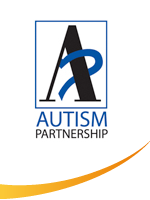Cause and Prevalence
Causes
At this point, the cause of autism remains unknown, however, the one theory that has strong scientific evidence is that genetics play a significant role in contributing to the occurrence of ASD. Studies show the concordance rate for identical twins is much higher than for fraternal twins, and ongoing research is beginning to identify genes that may put an individual at risk.
Additionally, in the last decade, there are more postulations on the relationship between environmental toxins, diets, vaccines and autism, but up till now, there is no convincing scientific evidence that demonstrate a causal link between ASD and these toxins, life-saving vaccines or diets. As a result, adherence to these speculative beliefs is tragic because more children are harmed by not receiving life-saving vaccination.
Finding the answer will require long-term, painstaking, rigorous, and sophisticated scientific investigation. Professional responsibility and ethics demand that care be taken not to over-speculate, misrepresent nor present mere hypotheses as facts for the causes of autism.
Prevalence
- 1 in 68 children has been identified with autism spectrum disorder (ASD) in the United States, 30 percent higher than previous estimates reported in 2012 of 1 in 88 children (Center for Diseases Prevention and Control, CDC 2014)
- 1,100,000 cases of autism in China; 650,000 in the UK; 500,000 in the Philippines; and 180,000 in Thailand (the World Health Organization, WHO, 2009)
- 49 children in every 10,000 is diagnosed with the disorder in Hong Kong (epidemiological study by V. Wong & S. Hui (2007) of The University of Hong Kong)
- 5 times more common among boys (1 in 42) than among girls (1 in 189). (Centers for Disease Control and Prevention, CDC, ASD)
- Studies in Asia, Europe, and North America have identified individuals with ASD with an average prevalence of about 1%. A study in South Korea reported a prevalence of 2.6%. (Centers for Disease Control and Prevention, CDC, ASD)
- Approximately 67 million people worldwide are affected by autism.
It is generally believed that the prevalence is similar across countries and cultures, although the numbers obtained in prevalence studies vary according to the methodology and diagnostic criteria used.
Boys are affected by autism at a much higher rate than girls, for reasons that are not entirely clear. A similar pattern is seen in other childhood disorders such as Attention Deficit Disorder.


